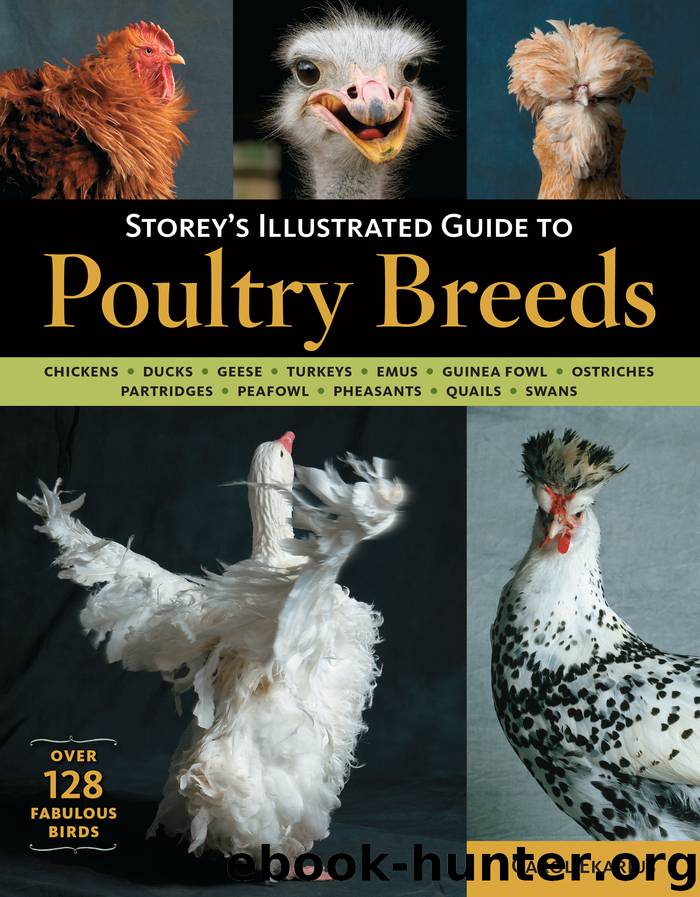Storey's Illustrated Guide to Poultry Breeds by Carol Ekarius

Author:Carol Ekarius
Language: eng
Format: epub
Tags: Chickens;Ducks;Geese;Turkeys;Emus;Guinea Fowl;Ostriches;Partridges;Peafowl;Pheasants;Quails;Swans
Publisher: Storey Publishing, LLC
Published: 2016-06-06T15:07:13+00:00
Place of Origin: Germany
Conservation Status: Study
Special Qualities: Small, highly ornamental bird with an extraordinarily long tail.
Ornamental Breeds
Polish
The Polish breed is known for its wild crest of head feathers.
The very first crested chickens I ever saw were Polish, bought by some friends of mine, and I laughed until I cried: Phyllis Diller-like, with their wild crest feathers and sprightly behavior, they were immediate comic entertainers. The Diller look may be topped off with beards and muffs, depending on the variety.
In spite of the name, the Polish breed isn’t from Poland. The breed as we know it today comes from Holland (where Polish birds show up in paintings dating back to the fifteenth century), but its beginnings are unclear. Some poultry historians speculate that the Polish indeed came from eastern Europe, while others think it made its way to Holland from birds originally found in Italy or Spain.
Polish chickens are usually fairly calm and friendly, but their crest and beard/muff feathers can interfere with their vision, so they are often spooked when they suddenly realize something is near. Hens don’t go broody. Polish hens were originally developed as a layer breed, and many strains and varieties are still excellent layers.
The Polish was first admitted to the APA in 1874.
Download
This site does not store any files on its server. We only index and link to content provided by other sites. Please contact the content providers to delete copyright contents if any and email us, we'll remove relevant links or contents immediately.
| Gardens | Landscapes |
| Plants & Animals | Underwater |
Shoot Sexy by Ryan Armbrust(17685)
Portrait Mastery in Black & White: Learn the Signature Style of a Legendary Photographer by Tim Kelly(16973)
Adobe Camera Raw For Digital Photographers Only by Rob Sheppard(16929)
Photographically Speaking: A Deeper Look at Creating Stronger Images (Eva Spring's Library) by David duChemin(16650)
Bombshells: Glamour Girls of a Lifetime by Sullivan Steve(14020)
Art Nude Photography Explained: How to Photograph and Understand Great Art Nude Images by Simon Walden(12998)
Perfect Rhythm by Jae(5354)
Pillow Thoughts by Courtney Peppernell(4241)
The Book of Joy by Dalai Lama(3941)
Good by S. Walden(3516)
The Pixar Touch by David A. Price(3389)
A Dictionary of Sociology by Unknown(3044)
Fantastic Beasts: The Crimes of Grindelwald by J. K. Rowling(3029)
Humans of New York by Brandon Stanton(2847)
Stacked Decks by The Rotenberg Collection(2841)
Read This If You Want to Take Great Photographs by Carroll Henry(2682)
On Photography by Susan Sontag(2605)
Insomniac City by Bill Hayes(2519)
Photographic Guide to the Birds of Indonesia by Strange Morten;(2507)
